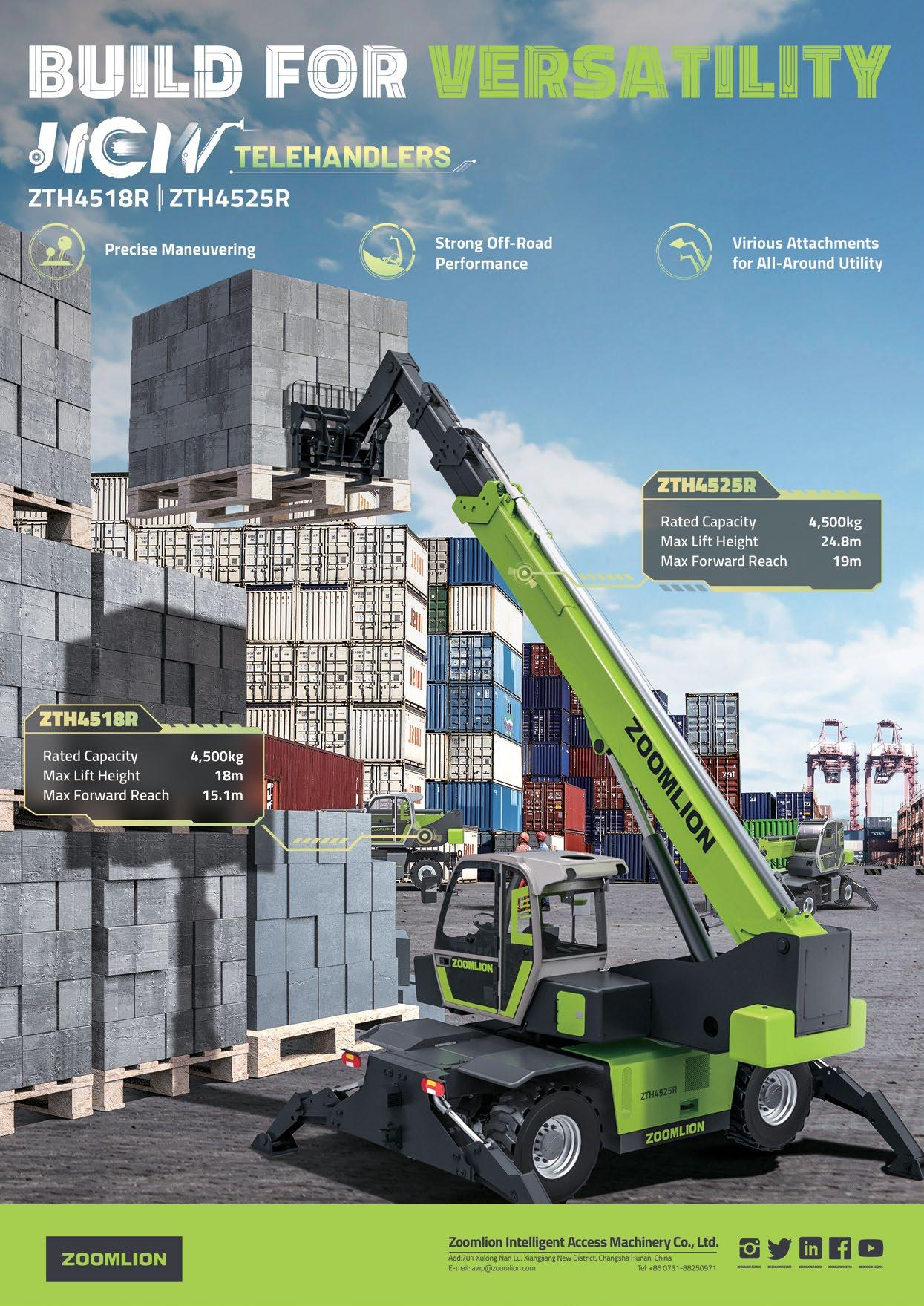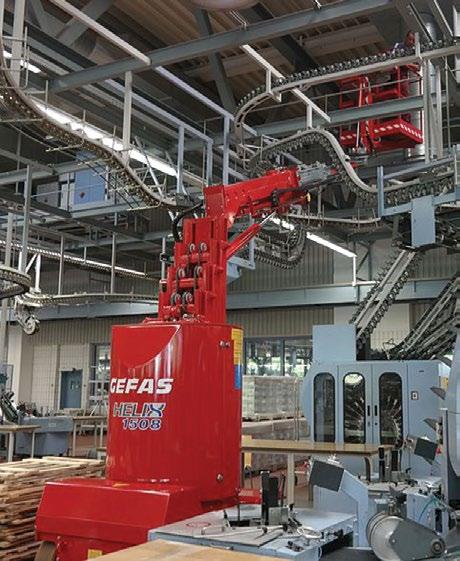
11 minute read
Mast booms over and out
Mast booms over and out
If you are looking for a machine with working height of up to around 12 metres, an outreach of a few metres, along with the ability to slew and with compact dimensions, there are really only two choices. We take a look at the increasingly popular mast boom which is ultra-compact, relatively lightweight and inexpensive but typically with limited outreach. We also look at the slightly larger, heavier and more expensive industrial narrow aisle booms which offer significantly more outreach.
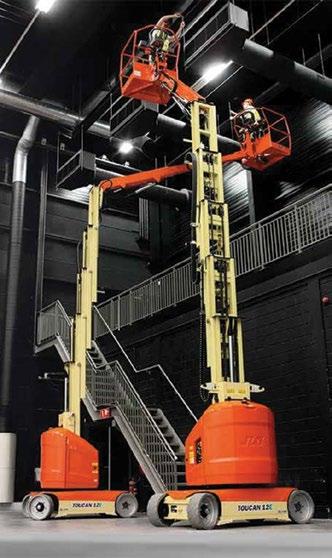
Both products have similar high rounded zero tailswing superstructures, however the mast boom has a vertical mast topped by a fixed length jib, the other short dual riser arms and a telescopic boom. The industrial narrow aisle unit is also wider, longer and significantly heavier as well as more expensive. It does, however, offer considerably more outreachbetween 6.1 and 7.5 metres - even though it is at a lower up & over height of between 3.8 and 4.7 metres. Platform capacity is also slightly better.

Industrial boom lifts such as these have been around for 40 years or more but have never really gained a sizeable following. They are highly specialised - perfect for say maintenance in an industrial plant - but too heavy and awkward for their modest working height to interest most general access rental buyers.
The mast boom arrived around 30 years ago, dating back to the early 1990s with a limited number of AMR units produced each year by Lift A Loft in the USA for big manufacturing companies like Ford and Caterpillar. A more commercial product came into being, with a start up in the form of Delta Systems and its Toucan, a beautifully designed product that would look at home in a shopping centre or airport as well as in an industrial plant. For the first few years sales were mostly to large end users. Delta soon realised that to increase sales it would need to be available to rent. The problem was that most rental companies said: “No one asks for such a machine.” As a result, Delta set up its own rental fleet and before too long rental companies began to be asked for them - surprise surprise.
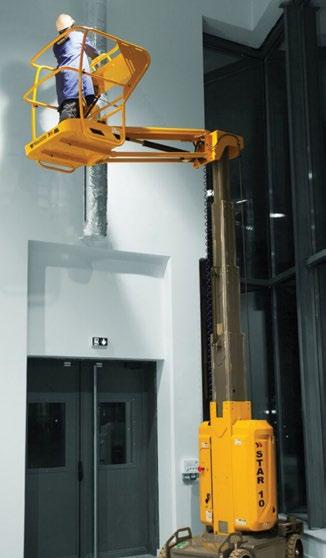
By the end of the 1990s sales began to take off as rental companies began to add them to their fleets and the word spread. Grove acquired Delta’s manufacturing plant while the rental fleet was retained by owner Daniel Duclos, becoming Access Industrie. Other manufacturers also began to join the market - in particular Haulotte which offered a good product and an attractive price. In those days the mast boom was a very French product, and the vast majority of units are still built in France by the likes of JLG which acquired the Toucan business from Grove in 2004, and Manitou. In recent years mast boom sales have continued to gather momentum and more manufacturers have introduced products and they are now popular in many countries. There are currently around 15 mainstream manufacturers offering almost 30 different models and variations including units from Chinese manufacturers which have entered the market such as Dingli, Sinoboom and LGMG. The most recent manufacturers to enter the sector though are Platform Basket with the first Italian designed and built machine with its tracked Heron 10, a break from its traditional products, while California based MEC Aerial Work Platforms launched the 11.2 metre MME30-RJ with direct wheel motor AC electric drive earlier this year.
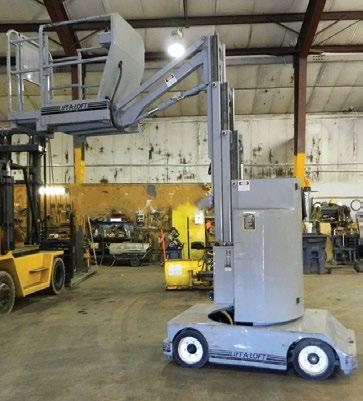
As can be seen from the comparison chart, the mast boom sector now offers working heights ranging from 7.5 metres right up to 15 metres, although the vast majority of units sold are between eight and 12 metres. The 10 metre unit is by far the most popular having an overall width of just under a metre, a three to 3.5 metre outreach, 180 to 240 degrees of slew and an overall weight of between two and three tonnes. This specification accounts for somewhere in the region of 90 percent of all sales.
Dustbin/Garbage bin booms
The narrow aisle industrial boom lifts - initially called a dust or garbage bin due to the shape of the superstructure - also seem to be going through a resurgence with Chinese manufacturers now adding them to their product ranges giving the concept an extra boost. At the same time most of the big western producers continue to offer them. So, expect volumes to grow, possibly because self-propelled aerial works are becoming an accepted and essential form of access equipment for industrial plant maintenance, replacing step ladders, scaffold towers or a pallet on the forklift?
Larger mast booms
There are several mast booms at the top end of the market in terms of working height which boast an outreach that rivals the industrial booms, such as the 12.65 metre working height/6.05 metre outreach JLG 12E Plus and the 15 metre/ seven metre outreach Helix 1508a. The overall width on these models is understandably greater at 1.2 metres - in line with the industrial boomshowever in the case of the JLG, the overall weight remains relatively light at 4,900kg. Compare this with the Helix’s 7,700kg, even heavier than all the industrial booms.
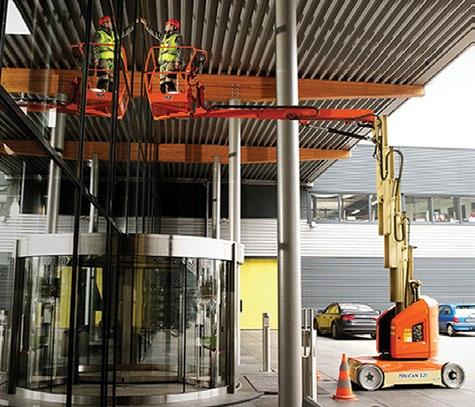
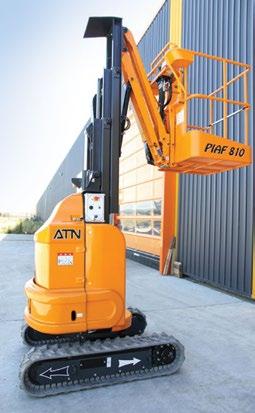
Tracked mast booms
The man with greatest responsibility for the mast boom market, Daniel Duclos, got out of mast boom production when he sold Delta to Grove, but after a few years in the rental game he itched to get back into it. So, in 2000 he helped set up ATN, initially with a tracked model that he could claim did not complete with the Toucan. He gave the products names like the Piaf 1010, adding wheeled versions later. The rationale for the tracked mast boom was for work in the large greenhouses in Northern France and the Netherlands where soft ground is always an issue.
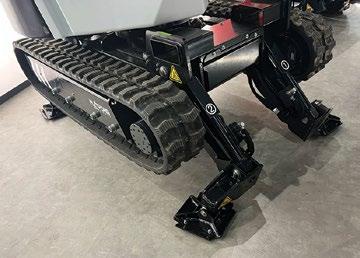
The company did relatively well but every few years seemed to struggle financially. It has to be said that many manufacturers found it hard to turn a decent profit margin with mast booms, although Delta/Grove JLG never seemed to have a problem. Loader crane manufacturer Fassi acquired it during one of its periods of insolvency, and failed to find the right formula, letting it go with Manitou acquiring the designs and certain assets in August 2022, but so far has done little, if anything with it. So enter Platform Basket.
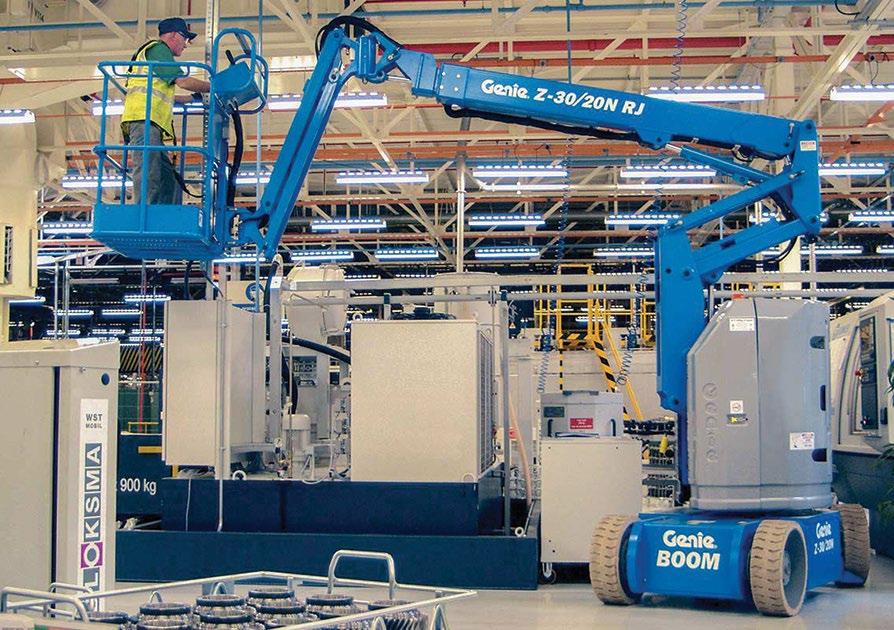
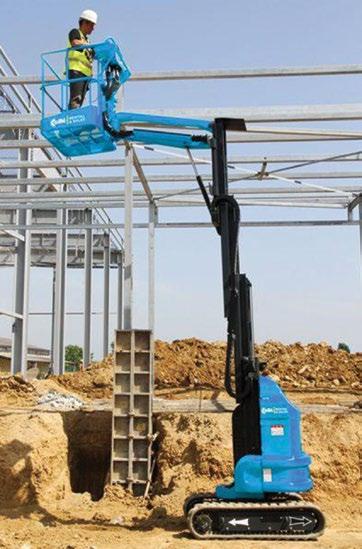
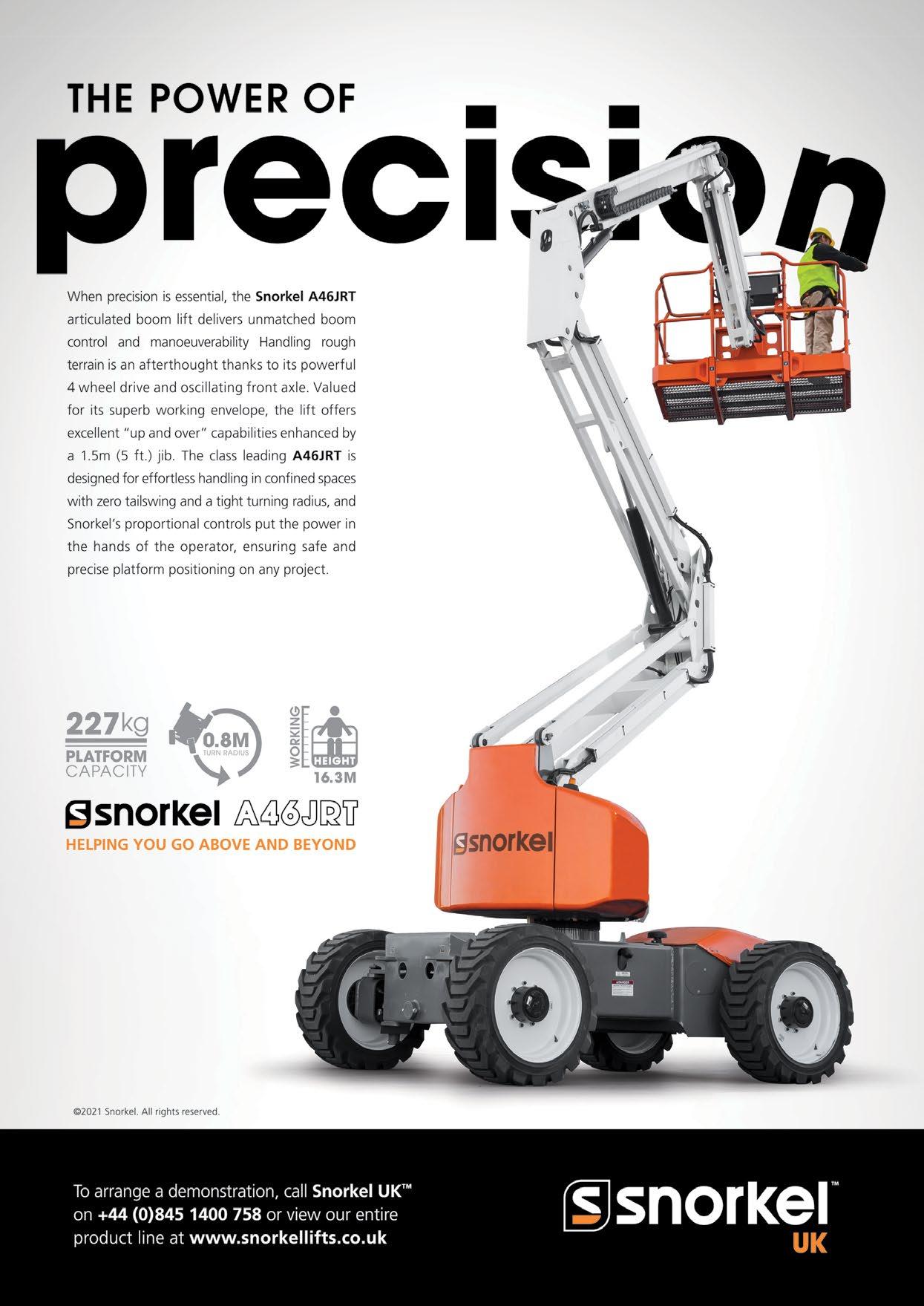
Platform basket’s Heron 10.
Last summer Italian manufacturer Platform Basket surprised everyone when it entered the mast boom market with a 10 metre tracked model with levelling jacks as standard. Dubbed the Heron 10 it uses a version of the company’s well proven rubber tracked chassis, with inboard mounted jacks that can level the machine on slopes of up to 10 degrees longitudinally or side to side. It can also be used on slopes of up to three degrees without the jacks. When on a steeper slope, a single button automatically levels up the machine.
Platform Basket uses a five section, open frame forklift type mast topped by an articulating jib offering a maximum working height of 9.6 metres and up to 3.4 metres of outreach at an up & over height of just over six metres, 360 degrees of slew, with a two person indoor and one person outdoor rating.
The overall width is slightly wider than most at 1.2 metres, with an overall stowed length of 3.25 metres and an overall height of 1.99 metres. Power options include either diesel or a lithium ion battery pack, with a total weight of 2,750kg for the diesel and 2,800kg for the electric version. Radio remote controls are standard. An interesting addition is the option of a jib mounted hoist/winch with 35 metres of wire rope storage that replaces the platform, creating a compact remote controlled mini crane with a maximum lift capacity of 250kg.
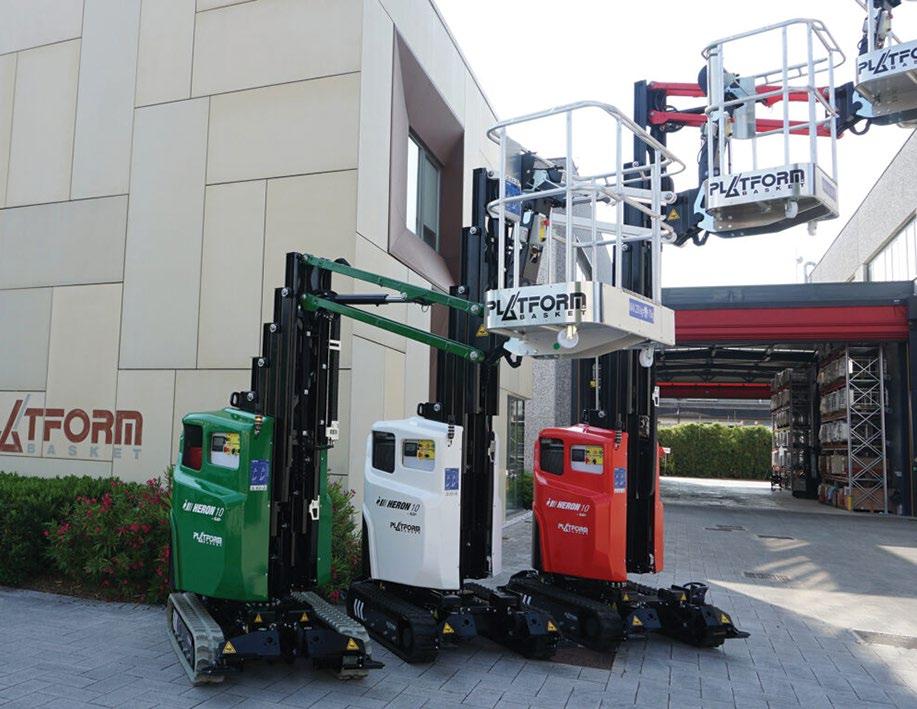
This machine may well prove to be a very good alternative to the current wheeled products from JLG, Haulotte and Manitou etc and should benefit from the demise of ATN and its tracked machines.
MEC mast boom
Another new manufacturer to enter the market last year is California based MEC Aerial Work Platforms, in which Chinese manufacturer Dingli holds a minority stake. Its first mast boomthe 11.2 metre MME30-RJ features direct AC electric wheel motor drive. While the MME30-RJ appears to essentially be a MEC version of Dingli’s AMWP11.5-8100, there are differences, as is usually the case for MEC alternatives to Dingli models. It features both indoor and outdoor ratings, although the outdoor working height is limited to 10.2 metres. Outreach is 2.6 metres at an up & over height of 7.6 metres with a maximum capacity of 227kg.
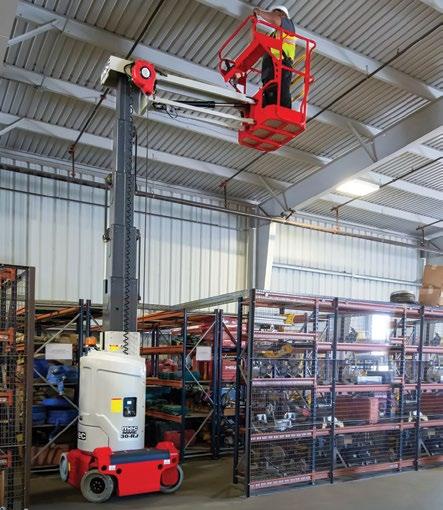
The overall width is the typical one metre, while the machine weighs just under three tonnes. The unit has a larger platform than is typical on this type of machine at one metre by 760mm. AGM maintenance free batteries are standard and combined with the AC drive motors, provide long work cycles between recharging.
MEC vice president of engineering Gary Crook said: “The single most detrimental aspect of this type of machine to Total Cost of Ownership (TCO) is wet lead acid type batteries that are difficult to maintain. We eliminated the problem by installing AGM type batteries as standard, they are maintenance free and hence a solid predictor to a lower TCO.”
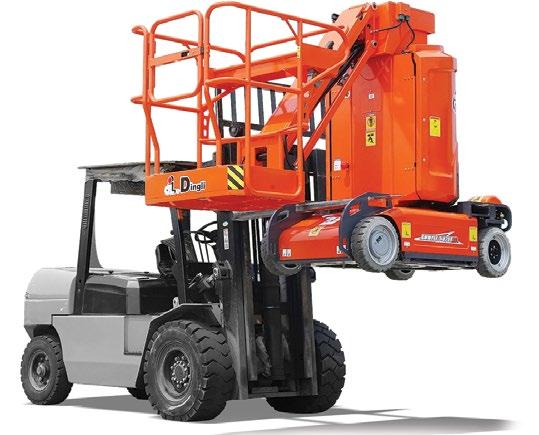
Dingli upgrades mast boom
Chinese aerial lift manufacturer Dingli has found a lot of success with its mast booms since launching its first unit 10 years ago, when it shipped the first units of the current AMWP11.58100 in 2014. Late last year it announced that it was upgrading the model to the 11.2 metre AMWP11.5-8200AC.
The new AMWP11.5-8200AC looks very similar and has the same one metre overall width and 1.99 metre overall height however it is 100mm shorter when stowed. The three metres of outreach at an up & over height of just under eight metres, 200kg platform capacity and 345 degrees of slew remain unchanged and overall weight is slightly heavier at 2,970kg.
The main differences of the new model include fully sealed AC electric motor wheel drive rather than the DC direct drive on the old machine. It also features maintenance free batteries, a slightly larger platform at 690mm x 930mmcompared to 620mm by 870mm - a full height entry gate for easy access to the platform and much faster lift and lower speeds of 42 seconds up/38 seconds down, compared to 70 and 60 seconds on the old model. The forklift loading pockets have also been changed to dedicated brackets on the top of the chassis dramatically improving balance and safety when lifting.
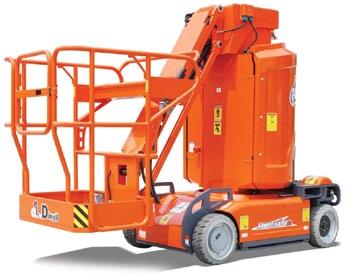

LGMG
And finally, LGMG’s latest mast boom is the M0810JE, with a 10 metre working height, a 3.2 metre jib and 200kg platform capacity. Overall width is one metre, while the overall stowed length is 2.6 metres. It has an indoor two person rating, with one person outdoors. Overall weight is 2,720kg.
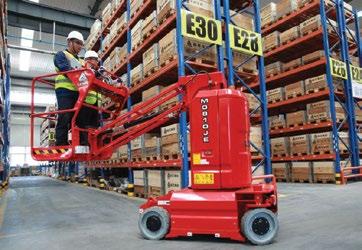
11m Reeslfit
Another new entrant is Chinese manufacturer Reeslift with its 11.2 metre AMWP11.2-8100. Maximum outreach is three metres at an up &
over height of 7.89 metres. The lift mechanism is a classic six section steel box type mast topped by a jib with 130 degrees of articulation. Maximum/unrestricted platform capacity is 200kg and slew 345 degrees.
The machine has an overall length of 2.53 metres, an overall width of one metre with an overall height of 1.99 metres. Overall weight is 2,950kg. The unit features automatic pothole protection and AC direct wheel drive. Although the machine looks very similar to Dingli’s AMWP11.5-8200AC it does have a slightly smaller platform, providing a slightly shorter stowed length.
Reeslift was established in 2015 and is based in the Feicheng Bianyuan Economic Area of Shandong, China - roughly half way between Beijing and Shanghai. Its product line is mostly low level, including mast type lifts, mast booms, slab electric scissor lifts, push around and portable lifts along with material lifts. It claims to produce around 5,000 units a year, much of which is exported.
The growing interest in the mast boom sector is reflected in the number and variety of machines available. It will be interesting to see if the launch of Platform Basket’s tracked unit spurs other manufacturers to produce a similar product. ■

